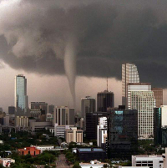 TORNADOES TORNADOES
As warmer weather arrives in Florida, the frequency of tornadoes rapidly increases. Yearly, the number of incidents increases to a maximum in June, July and August with a fast decline in October, November and December. But just looking at the numbers does not tell the whole story.
Winter and springtime tornadoes are more powerful because of the presence of the jet stream. As this powerful upper wind current meanders across the North American continent, it frequently bends down into the Gulf of America. When accompanied by a strong cold front and a strong squall line of thunderstorms sweeping across Florida, the jet stream’s high level winds of 100 to 200 mph often strengthen a thunderstorm into what meteorologists call a supercell or mesocyclone. These powerful storms can move at speeds of 30 to 50 mph, produce dangerous downburst winds, large hail and the most deadly tornadoes.
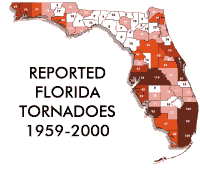 Usually, other areas in the United States may experience large, killer tornadoes in the late afternoon and early evening hours. This is due to the afternoon buildup of heat in the lower atmosphere that lingers into the early nighttime hours. But, Florida is different. Tornado climatology shows us that strong to violent tornadoes are just as likely to occur after midnight as they are in the afternoon. This unique feature makes these tornadoes more dangerous, because most people are asleep after midnight and cannot receive weather warnings relayed by commercial radio or television stations. The solution to this is to have a NOAA Weather Radio in your home with a tone alert feature. This will allow you to receive warnings issued by your local National Weather Service office. Usually, other areas in the United States may experience large, killer tornadoes in the late afternoon and early evening hours. This is due to the afternoon buildup of heat in the lower atmosphere that lingers into the early nighttime hours. But, Florida is different. Tornado climatology shows us that strong to violent tornadoes are just as likely to occur after midnight as they are in the afternoon. This unique feature makes these tornadoes more dangerous, because most people are asleep after midnight and cannot receive weather warnings relayed by commercial radio or television stations. The solution to this is to have a NOAA Weather Radio in your home with a tone alert feature. This will allow you to receive warnings issued by your local National Weather Service office.
How do tornadoes form?
Most tornadoes are produced by rapidly rising air in a thunderstorm updraft, although smaller tornadoes and waterspouts can form in weaker showers. If there is a large increase in wind speed and a change in wind direction with height, the updraft will spin. This is called shear. The larger the shear the greater the rotation and the greater the chance of a tornado.
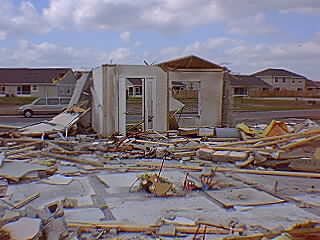 Historically, Florida experiences stronger and more dangerous tornadoes in February, March and April. The four deadliest springtime tornado outbreaks in Florida history have occurred during this time. A tornado struck Miami April 5, 1925, killing five people. A tornado struck a turpentine plant in Northeast Florida, March 30, 1939, killing four workers. Northwest Florida residents experienced a tornado strike near Milton, March 31, 1962, killing 17 people. Finally, the deadliest central Florida tornado outbreak, February 22-23, 1998, produced four mesocyclones that spawned seven tornadoes. Forty-two people were killed in Volusia, Orange, Osceola and Seminole counties. Historically, Florida experiences stronger and more dangerous tornadoes in February, March and April. The four deadliest springtime tornado outbreaks in Florida history have occurred during this time. A tornado struck Miami April 5, 1925, killing five people. A tornado struck a turpentine plant in Northeast Florida, March 30, 1939, killing four workers. Northwest Florida residents experienced a tornado strike near Milton, March 31, 1962, killing 17 people. Finally, the deadliest central Florida tornado outbreak, February 22-23, 1998, produced four mesocyclones that spawned seven tornadoes. Forty-two people were killed in Volusia, Orange, Osceola and Seminole counties.
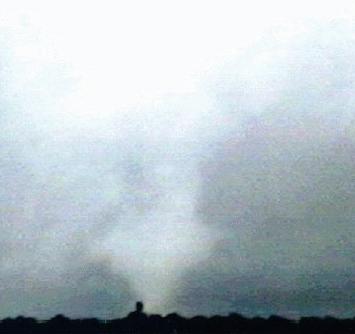 During the late summer and fall, tropical cyclones also increase the occurrence of tornadoes. Hurricane Agnes spawned tornadoes that killed seven people in Okeechobee County June 18, 1972 when the hurricane eye was 200 miles west of Tampa. Even unorganized tropical disturbances can be dangerous. A low pressure center originating in the southwest Gulf of America spawned tornadoes hundreds of miles from its center that killed four people in the Tampa Bay area October 3, 1992. Tropical Storm Josephine in October 1996 produced a record 20 tornadoes including one that cut a 400 yard-wide, eight-mile long path across the town of Edgewater. During the late summer and fall, tropical cyclones also increase the occurrence of tornadoes. Hurricane Agnes spawned tornadoes that killed seven people in Okeechobee County June 18, 1972 when the hurricane eye was 200 miles west of Tampa. Even unorganized tropical disturbances can be dangerous. A low pressure center originating in the southwest Gulf of America spawned tornadoes hundreds of miles from its center that killed four people in the Tampa Bay area October 3, 1992. Tropical Storm Josephine in October 1996 produced a record 20 tornadoes including one that cut a 400 yard-wide, eight-mile long path across the town of Edgewater.
Tornado Safety
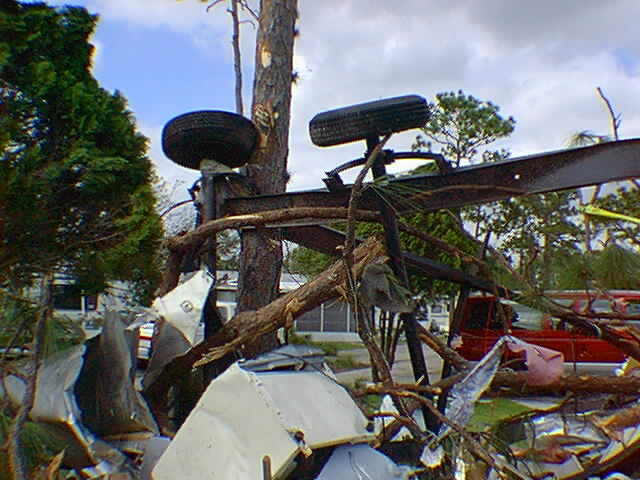 How can you protect yourself from a tornado? One of the best ways is to listen for tornado warnings issued by the National Weather Service. The fastest access to those warnings is through a NOAA Weather Radio. These receivers can be purchased for around $40 at commercial electronics stores. This equipment will alert you day or night whenever a severe weather warning is issued. If you receive no warning, your best clue that a tornado is approaching is the tell-tale roaring or rumbling sound they make. If you hear this, or a National Weather Service warning for your area, take cover quickly. Find a small, interior room on the lowest floor of a strong building and stay away from doors and windows. Don’t try to outrun a tornado in a car. If you see a tornado while in a car, take cover in a nearby strong building or get into a ditch on the side of the road. How can you protect yourself from a tornado? One of the best ways is to listen for tornado warnings issued by the National Weather Service. The fastest access to those warnings is through a NOAA Weather Radio. These receivers can be purchased for around $40 at commercial electronics stores. This equipment will alert you day or night whenever a severe weather warning is issued. If you receive no warning, your best clue that a tornado is approaching is the tell-tale roaring or rumbling sound they make. If you hear this, or a National Weather Service warning for your area, take cover quickly. Find a small, interior room on the lowest floor of a strong building and stay away from doors and windows. Don’t try to outrun a tornado in a car. If you see a tornado while in a car, take cover in a nearby strong building or get into a ditch on the side of the road.
Remember, tornadoes are deadly and can strike suddenly. They can destroy structures in minutes or seconds. Plan ahead now to be prepared, and don’t leave home without a weather radio.
|